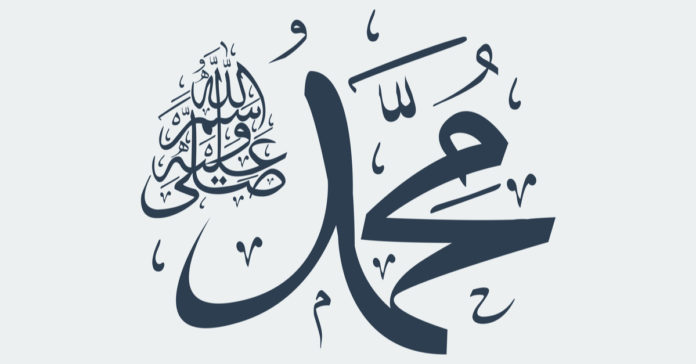Amidst all the furore over the Charlie Hebdo killings and their aftermath, blogger, Muslim convert and PHD student João Silva Jordão takes a step back and asks: “So why is it that I’m not supposed to draw the Prophet again?”
As a Muslim I have become rather bored with the increasingly stale debate surrounding terrorist attacks, the use of the term “terrorist,” freedom of speech and so on and so forth.
Though some excellent points have been made here and there, lately I have increasingly felt the urge to stop everyone and ask:
“As a Muslim, why is it that I’m not supposed to draw the Prophet (pbuh) again?”
I ask this not because I don’t know how to answer that question myself, but because I feel like the average person who didn’t know before the most recent tsunami of media coverage will certainly not know after having been overwhelmed by it during the last few months.
It’s almost as if the answer to that question is regarded as being so obvious that it must be relegated to the background, thrown into the depths of that pit consisting of unquestioned common knowledge, so that a more serious, advanced discussion can take place.
But I would specifically invite anyone who is not a Muslim to actually answer this question: Why does Islam prohibit its followers from drawing its founder and dearest leader? Why is it that Muslims not only get angry when people draw offensive cartoons, but generally object to any and all depictions, even if they are positive?
Subscribe to our newsletter and stay updated on the latest news and updates from around the Muslim world!
Think about it.
Religious and political depictions
Most religious and political movements do not object to neutral or positive depictions of their leaders. And many go to great lengths, sometimes to ridiculous lengths, to promote and undertake favourable depictions of their leaders.
From ancient Babylon, to ancient Egypt, to Persia and Greece, Rome and beyond, carvings, drawings, paintings, sculptures and statues depicting political and religious leaders abound. But most Muslims frown even at small, simplistic depictions of the Prophet (pbuh) intended solely for historical purposes.
Think about it.
So one must ask: In the middle of all the hysteria about how badly Muslims supposedly react to cartoons depicting the Prophet (pbuh), does anyone even care about why we are supposed to care?
One would think not. Because all the emphasis has gone into scaring everyone, Muslims and non-Muslims alike, into fleeing back into a false refuge, the desolate cave that is tribalism and nationalism from whence we all came.
But somewhere along the way we Muslims seem to have forgotten that there is something much more profound, much more characteristically and fundamentally Islamic that permeates this debate other than the defence of someone we hold dear.
And at its core is the very idea that makes us who we are.
Why the prohibition?
So why is it that Islam prohibits the depiction of the Prophet Muhammed?
The most poignant answer can be found in the Islamic motto: “There is no God but God.” Simply put, that means that Islam has one main idea, one main thesis, which is that there is one omnipotent entity and that this entity alone deserves to be worshipped.
So the main responsibility of a human being according to Islamic principles is to preserve, convey, spread and act upon the belief that God alone deserves to be worshipped.
The second part of the Islamic motto is: “And Prophet Muhammed is God’s Messenger,” which means that as a Muslim one accepts that Prophet Muhammed (pbuh) is the messenger of God.
In short, the Islamic motto indicates that a Muslim is a Muslim insofar as he or she accepts that Prophet Muhammed (pbuh) came to teach, or rather, to remind mankind that God alone, and nothing else, deserves to be worshipped.
And when one says “nothing else,” that most certainly includes Prophet Muhammed (pbuh).
But how does one manage to simultaneously preserve the message without falling into the trap of ending up worshipping the messenger? There are many provisions one must take if one is to even stand a chance, but undoubtedly, one of the most important of these provisions is to do one’s best to abstain from visually depicting the leaders associated with the message one seeks to preserve.
And herein is the one of the many paradoxes of this whole affair: The prohibition of the depiction of the Prophet Muhammed (pbuh) is meant to be an internal safeguard to prevent the corruption of Islam, not least because of the tendency that religious movements have historically shown in becoming so focused on their respective leaders that their initial beliefs soon become secondary to an obsession regarding the person who champions or championed the ideas.
Muslim response
In response to recent depictions of the Prophet Muhammed by non-Muslims, us Muslims have been philosophically trapped into a dilemma and find ourselves being coerced into behaving and looking like nothing more than a personality cult, a tribe defending its leader, a particular religious faction defending its particular prophet.
But how many of us have stopped to ask non-Muslims if they understand why we try not draw the Prophet (pbuh) at all?
How many of us have stopped to ask them why it is that most despotic regimes, including many self-proclaimed “Islamic” regimes, love to depict their leader obsessively, but Islam, the alleged modern reincarnation of the bogeyman, prefers to use stylized calligraphy and abstract symbols to identify itself?
Let’s take two particularly fascinating, contrasting examples – Nazi Germany and the Soviet Union. The former was a State whose officials constantly repeated the mantra “Heil Hitler,” a re-adaptation of Ancient Rome’s “Hail Caesar,” used in much the same manner one adopts when invoking a higher force.
The latter took the visual deification of Marx, Engels and Stalin to degrees that would make many overtly religious cults blush. In both cases, the depictions of their respective inspirational figures and dictators were ubiquitous.
It was commonplace for State officials to have portraits of their hierarchical superiors in their places of work, that parades be organised so as to coerce the population into committing acts of virtual worship, whether towards the leaders themselves or towards a symbolic representation of their leaders.
The worshipping of human beings is not merely a symptom of despotism, it is one of its main causes. So in rejecting to depict the leader we most admire we are in fact trying to stave off the despotism of this world, whether the oppressive despot be a tyrant, a State, or our own worldly desires.
If we could explain this to the world, then not only could one take this opportunity to spread knowledge about what Islam actually is, it would put Muslims where they belong – fighting to liberate mankind from oppressive worldly forces, whether the oppressor or the oppressed be Muslims or not.




















